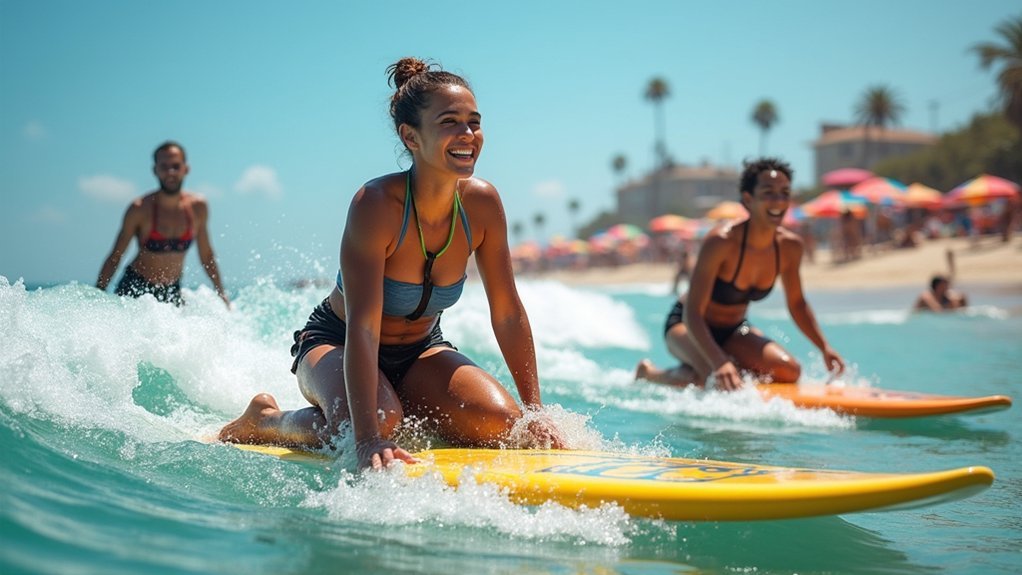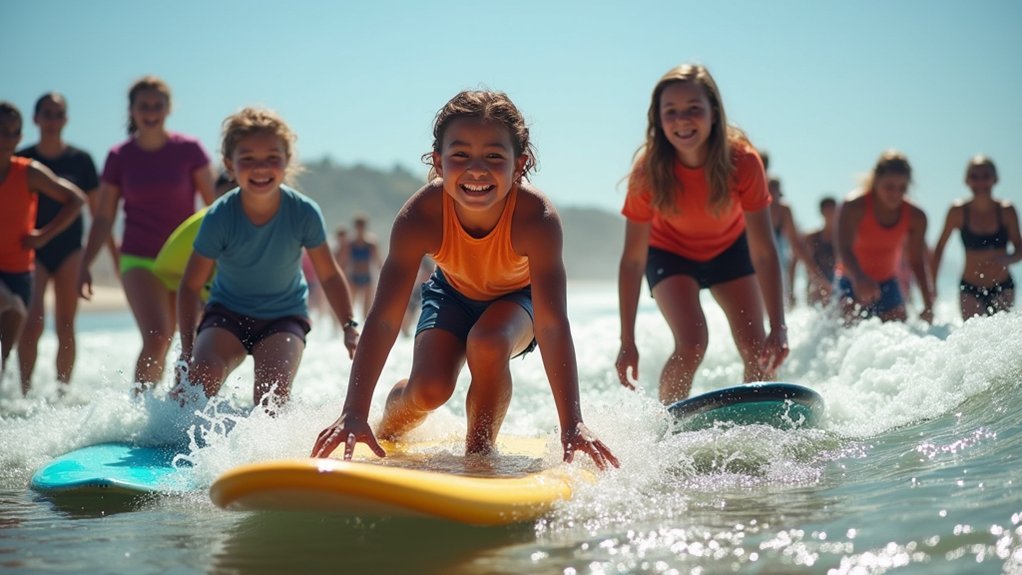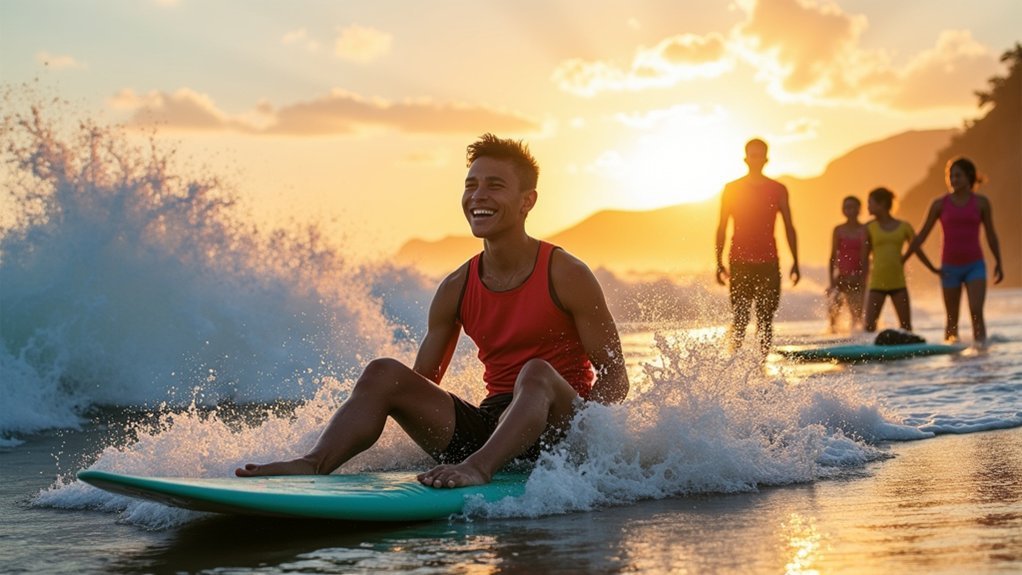Adaptive surfing offers three essential lessons for disabled athletes: personalized equipment selection, progressive water confidence building, and peer mentorship connections. You’ll benefit from wider, more stable boards and specialized safety gear while gradually developing ocean comfort through guided instruction. Experienced adaptive surfers provide invaluable insights as mentors, helping you navigate both technical skills and emotional challenges. These fundamental elements form the foundation for your successful journey into the transformative world of adaptive surfing.
Customized Adaptive Equipment for Ocean Success

While traditional surfing equipment presents significant barriers for disabled athletes, adaptive surfboards have revolutionized ocean accessibility through thoughtful design modifications. You’ll find these boards feature wider bases and enhanced stability features tailored to your specific needs.
Before your first surfing lesson, verify you have proper safety equipment, including buoyancy aids and helmets that accommodate your particular requirements. Beach wheelchairs can help you navigate sandy shores with ease, eliminating a major obstacle to water entry.
Technological advancements have transformed adaptive surfing with customized setups that address individual mobility challenges. From specialized paddles to modified grips, adaptive surfers now have unprecedented options to experience the thrill of catching waves, regardless of disability type.
Building Water Confidence Through Progressive Techniques
Once properly equipped with adaptive gear, your journey into surfing begins with building comfort in the ocean environment.
Experienced instructors use beach wheelchairs to help you shift from sand to surf, gradually introducing you to the water’s rhythm before you tackle waves.
Moving from sand to surf requires guidance – expert instructors bridge this transition with specialized equipment and patient water introduction.
The path to water confidence follows strategic techniques:
- Initial familiarization – Instructors help you adjust to ocean sensations and movements
- Seated surfboard practice – Develop balance using specialized adaptive surfboards
- Guided wave selection – Learn to identify manageable waves with instructor support
- Mentorship pairing – Connect with experienced adaptive surfers who understand your journey
Safety remains paramount throughout this progression.
As you master each technique, you’ll build the confidence needed to push boundaries while enjoying the therapeutic benefits of adaptive surfing.
Community Support: The Power of Peer Mentorship in Adaptive Surfing

The transformative power of mentorship creates a foundation for success in adaptive surfing that extends far beyond technical skills.
When experienced adaptive surfers connect with newcomers, they’re building a supportive environment that accelerates skill development and confidence building.
You’ll find community engagement thrives through organized events like the Junior Seau Foundation surf clinics, where shared experiences cultivate lasting connections.
Many participants report increased motivation and ambitious goal-setting after receiving guidance from seasoned surfers.
Frequently Asked Questions
How Can Disabled People Surf?
You can surf with adaptive equipment like wider surfboards and beach wheelchairs, tailored lessons from trained instructors, and support from specialized programs that accommodate your specific needs. Many organizations offer financial assistance too.
Can People in Wheelchairs Surf?
Yes, you can absolutely surf from a wheelchair! Specialized adaptive surfboards, beach wheelchairs, and guided clinics make it possible. You’ll use equipment designed for stability and safety while experiencing the thrill of riding waves.
What Is an Adaptive Surfer?
An adaptive surfer is someone with physical or cognitive disabilities who surfs using specialized equipment. You’ll see them using modified boards and assistance techniques that help them experience the joy of riding waves despite their limitations.
How Does Para Surfing Work?
Para surfing works by using specialized equipment tailored to your specific needs. You’ll surf with modified boards, beach wheelchairs for access, and personalized instruction whether you’re seated, prone, or need guidance for visual impairments.
In Summary
You’ve seen how customized equipment, progressive water confidence techniques, and peer mentorship form the foundation of adaptive surfing success. By embracing these three lessons, you’ll overcome physical limitations and experience the freedom of riding waves. Don’t wait—connect with adaptive surf organizations in your area today. The ocean doesn’t discriminate, and with the right support, you’ll discover new capabilities you never thought possible.





Leave a Reply